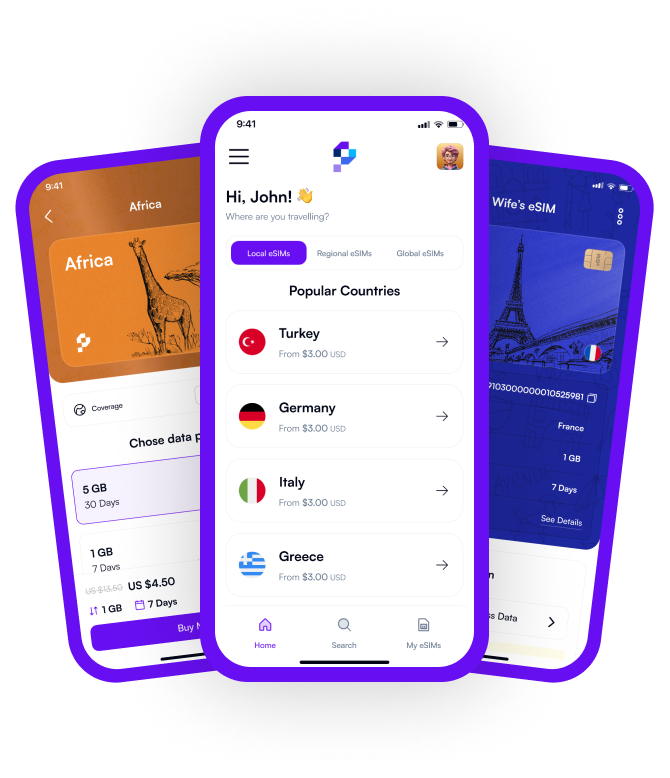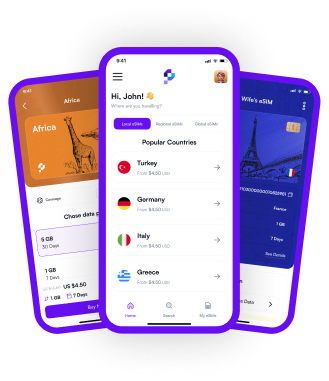The activation time for an eSIM can vary depending on several factors, including the carrier you're using, your device, and any potential technical issues. In many cases, activating an eSIM can be relatively quick, often taking just a few minutes. This streamlined process is one of the main advantages of eSIM technology compared to traditional physical SIM cards. With eSIMs, there's no need to wait for a physical card to be shipped or inserted into your device, as the activation can typically be done digitally and remotely.
However, it's essential to note that while many activations are swift, some situations may require more time. Issues such as network congestion, compatibility problems with your device, or verification processes may cause delays. Additionally, some carriers might have specific procedures or security checks in place that could extend the activation process. Overall, while eSIM activation is generally efficient, it's wise to be prepared for potential variations in timing based on individual circumstances and provider requirements.
How Long Will it Take for eSIM to Activate?
The time it takes for an eSIM to activate can vary depending on several factors, including the carrier's processes, network conditions, and any technical issues that may arise. In many cases, eSIM activation can be completed within a matter of minutes, offering a convenient and efficient alternative to traditional SIM cards. This quick activation process is one of the primary advantages of eSIM technology, allowing users to set up their devices and access cellular services rapidly without the need for a physical SIM card.
However, it's important to acknowledge that there can be instances where eSIM activation may take longer than expected. Factors such as network congestion, compatibility issues with the device or network, or additional security verifications may contribute to delays in the activation process. While most activations proceed smoothly, it's advisable to be patient and prepared for potential variations in timing based on individual circumstances and the policies of the carrier involved. Overall, while eSIMs offer a streamlined activation experience, it's essential to be aware that some situations may require additional time to ensure a successful setup.
Why is eSIM Activation so Hard?
eSIM activation can sometimes be perceived as challenging due to several factors inherent in the technology and the telecommunications industry. One primary reason is the complexity of integrating eSIM support across different devices, operating systems, and carrier networks. Ensuring seamless compatibility and interoperability among these various components requires significant coordination and technical expertise. Additionally, because eSIM technology is still relatively new compared to traditional SIM cards, there may be fewer standardized processes and established best practices, leading to potential difficulties in activation procedures.
Moreover, the activation process may involve stringent security measures to prevent unauthorized access and ensure user privacy. This can include identity verification and authentication steps that may add complexity and time to the activation process. Furthermore, eSIM activation often requires coordination between the device manufacturer, the cellular network provider, and potentially other third-party service providers, introducing additional layers of complexity and potential points of failure. Despite these challenges, ongoing advancements in eSIM technology, standardization efforts, and industry collaboration are gradually making the activation process more streamlined and user-friendly.
How do I Know if my eSIM is Activated?
Once you've initiated the activation process for your eSIM, there are several ways to determine whether it has been successfully activated. One of the most straightforward methods is to check the status of your cellular connection on your device. If the eSIM activation has been completed, you should see indicators such as signal bars or network connectivity icons, depending on your device's operating system. Additionally, you may receive a confirmation message or notification from your carrier or device indicating that the eSIM activation process is complete.
Another way to verify eSIM activation is to access the settings menu on your device and navigate to the section related to cellular or network connections. Within this menu, you should be able to view details about your eSIM, including its status and associated carrier information. If the eSIM is active, you should see relevant details such as the carrier name, phone number, and network status. If you encounter any issues or uncertainties regarding the activation status of your eSIM, contacting your carrier's customer support team can provide further assistance and clarification. They can verify the activation status on their end and troubleshoot any potential issues to ensure your eSIM is fully operational.
How to Fix eSIM stuck on activating?
If your eSIM is stuck on activating, there are several troubleshooting steps you can take to resolve the issue. First, ensure that your device is connected to a stable and reliable internet connection. Poor network connectivity can impede the activation process, so switching to a different Wi-Fi network or enabling mobile data may help. Additionally, restart your device to refresh its system processes, which can sometimes resolve activation-related issues. After restarting, attempt to initiate the eSIM activation process again to see if it progresses successfully.
If the problem persists, consider reaching out to your carrier's customer support for assistance. They can provide guidance tailored to your specific situation and may be able to troubleshoot any network or account-related issues preventing the eSIM activation from completing. In some cases, they may need to manually intervene or reset the activation process on their end to resolve the issue. Alternatively, if you're using a device provided by your employer or organization, contact your IT department for support, as they may have additional resources or procedures in place to address eSIM activation issues specific to your organization's policies and configurations.
Do You Need to be on Wi-Fi to activate eSIM?
While it's not strictly necessary to be on Wi-Fi to activate an eSIM, having access to a stable internet connection can significantly facilitate the process. Most eSIM activation procedures require an internet connection to download the necessary profile and configuration settings from your carrier's servers. Wi-Fi is often preferred for this purpose due to its typically faster and more reliable speeds compared to mobile data connections. Additionally, using Wi-Fi for eSIM activation can help conserve your mobile data allowance, especially if the activation process involves downloading large files or updates.
However, if Wi-Fi is unavailable, you can still activate an eSIM using a mobile data connection. Just ensure that your data plan provides sufficient bandwidth and stability to support the activation process without interruptions. It's also worth noting that in some cases, carriers may require you to connect to a cellular network (either through an existing SIM card or another means) during the initial setup to authenticate your device and account before activating the eSIM. Overall, while Wi-Fi can streamline the eSIM activation process, it's not strictly mandatory, and you can activate an eSIM using a reliable mobile data connection if necessary.

